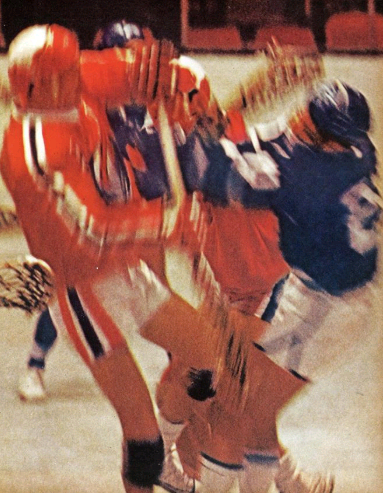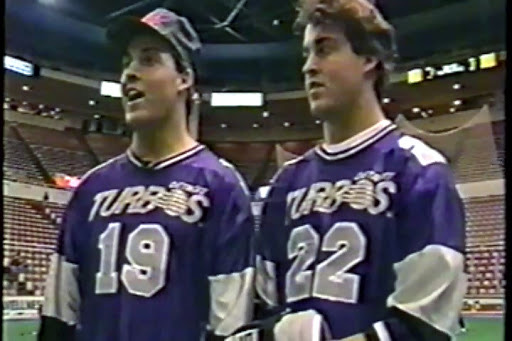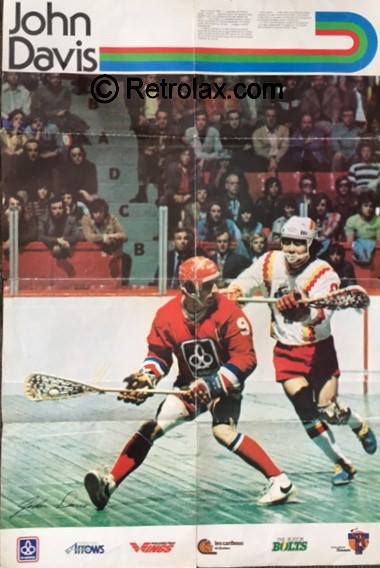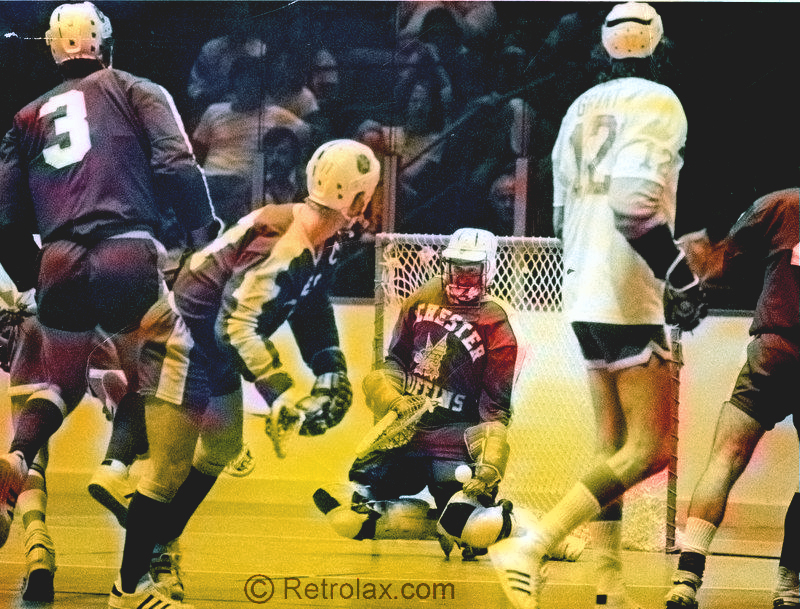by Steve Holroyd (laxmavn@aol.com)
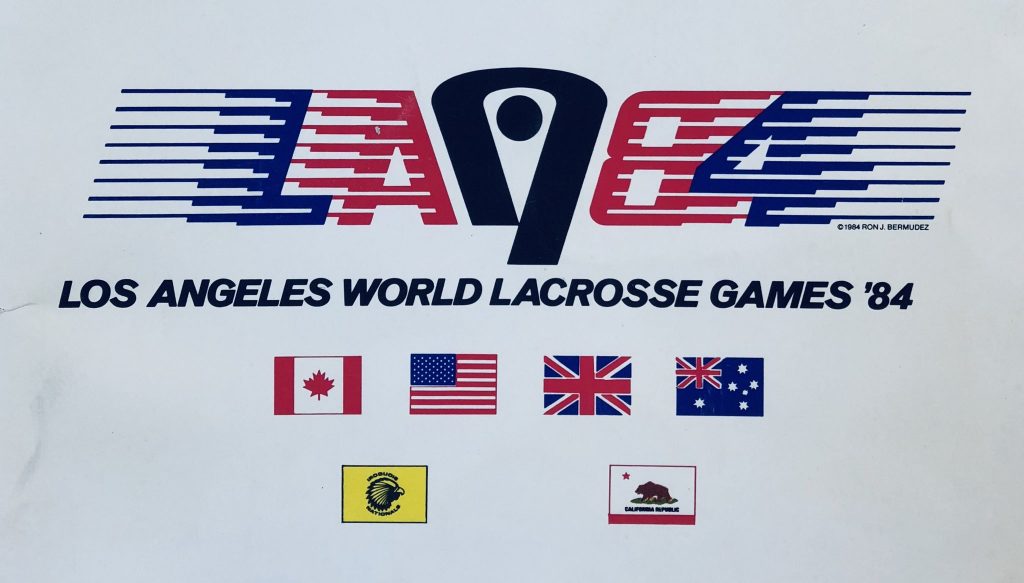
On November 30, 2018, a long-anticipated event finally came to pass: the International Olympic Committee granted provisional recognition status to the Federation of International Lacrosse. Many hope that this will be the first step towards lacrosse once again becoming an Olympic sport.
Lacrosse made its debut at the 1904 games in St. Louis, and was an “official” sport at the 1908 games before being dropped from the slate of events. It returned as a demonstration sport in 1928, 1932, and 1948, but has not been contested as part of the Olympic Games since.
In 1984, however, lacrosse was contested during the Los Angeles games.
That summer, the Men’s and Women’s World Lacrosse Championships were scheduled to be the featured athletic event at the Jim Thorpe Memorial Pow-Wow & Games, an event staged specifically to bring attention to the injustice that was the forfeiture of medals earned by Thorpe at the 1912 Summer Olympics and, in the words of the event planners, would “be the place Jim Thorpe’s honor will be returned. Fifty-two years after his disgrace, this Pow-Wow will bring all of the Indian nations together to celebrate their traditions.”[1]
Given its native origins, it was fitting that the World Lacrosse Championships would be the featured athletic event at the Pow-Wow. Although the World Games were normally held every four years, and had recently been contested in 1982, the “International Lacrosse Federation is holding a special set of these Games to display lacrosse as a potential re-entry as an Olympic Event, and as a special tribute to the memory of this nation’s best all-around athlete of this century—Jim Thorpe (an avid lacrosse player).”[2]
There was a further political element to the inclusion of lacrosse: the Iroquois Nation hoped to use the World Games as a stage to further its 90-year old fight for readmission into the ILF, from whence it had been barred in the 1890’s on the grounds that the team did not represent a country.[3]
Scheduled to compete in the event were men’s and women’s teams from the United States, Canada, Australia, and England; because it was a “special event,” the newly-formed Iroquois Nation team would be permitted to participate,[4] along with an All-California team.
The World Games would be held from July 17 to 22, at Wittier Narrows Park in South El Monte in Los Angeles County, about ten miles from downtown Los Angeles.
No women
While it was only fitting that the ancient Indian sport of lacrosse would be a featured event at a Native American ceremony, the convergence of games and Native culture had one unfortunate—and unintended—consequence. Anheuser-Busch had originally considered committed $50,000 to sponsor the event. However, the hosts objected to a beer company sponsoring anything to be held on Indian lands. Looking to avoid any controversy, Anheuser-Busch simply dropped the matter.[5]
With a shortage of funding, the World Games’ organizers determined to drop the women’s slate of games.
Unfortunately, no one told the women’s teams who were to participate. “We were all set to go,” said Lee Waters, President of the United States Women’s Lacrosse Association. “We had our transportation, housing—everything was ready. Then I got a call on June 18 at midnight telling me everything was off. I couldn’t believe it.”[6]
“What a mess, I couldn’t believe the trip was off,” Waters continued. “My players went nuts. They were hysterical. The big sufferer, of course, is the game of women’s lacrosse. The tournament would have been a showcase for the women’s game. People from New Zealand, India, France and several other countries were going to observe the game with the thought of beginning a lacrosse program. Now, that won’t happen.”[7]
As it is, Anheuser-Busch’s decision to take a pass on sponsorship may have only been one reason for cancelling the women’s games. U.S women’s team member Betsy Williams said she had been told by a reporter from Lacrosse magazine that the fields the women were to play on were in “horrible shape.”[8]
In any event, there would be no women’s lacrosse at the World Games.
The Games
Even though a “special event,” the World Games still featured the best field lacrosse players on the planet.
The United States—current world champions by virtue a 22-12 win over Australia in Baltimore at the 1982 Games—went unbeaten in the tournament to “retain” its title. The final saw the U.S. stomp Canada, 25-13, on July 22. Jeff Cook, former All-America at Johns Hopkins University, scored four goals and added six assists for the winners, while Bob Griebe, a former All-America at Towson State, added three goals and six assists. Bill Beroza, formerly of Roanoke, made 10 saves for the U.S.
Derek Keenan scored three goals for Canada, and Jim Weller, John Jordan, and 33-year old box lacrosse legend John Grant added goals in the loss.
The tournament also provided the first ever victory for the Iroquois Nationals in competition—a win over England.
An All-World Team was named after the tournament: Chris Hall, John Jordan (M), and Jim Weller (A)(Canada); Murray Keun (G) and Peter Cann (F), (Australia); Mark Greenburg (D), Jim Burke (D), and Jim D’Arcangelo (M)(USA); and Mikko Red Arrow (M) and Emmett Printup (F)(Iroquois Nationals).[9] Weller was named the tournament’s Most Valuable Player.
Team California
While the inclusion of an Iroquois National team made sense, given its agenda to achieve formal recognition, the addition of an “All-California” team was a bit more puzzling. However, there was a method to the madness.
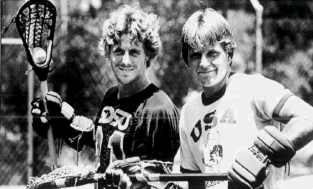
“Mostly, it’s [the World Games] going to let the East Coast know there is lacrosse out here in the West,” said Russ Olsen, a sophomore at San Diego State who was a member of the California squad. Added fellow sophomore San Diego State and All-California teammate Tom Hannum, “It’s definitely going to take lacrosse a step further on the West Coast. It’s going to change a lot of minds. If the Olympics and everything go well, it’s going to really pick up the popularity for lacrosse in the West.”[10]
Team California was selected by coach Mickey-Miles Felton after initial open tryouts collected 23 players from northern California and another 23 from the southern part of the state. A final tryout resulted in the selection of the final squad of 23. While Felton was originally focused on graduating seniors, the play of Olsen and Hannum—who had led the Aztecs to undefeated seasons in 1983 and 1984 in the Western Collegiate Lacrosse League—earned them spots on the team.
“We made a conscious decision that we wanted to have the best team possible,” said Felton. “I didn’t think we should be restricted by how old a player was.”[11]
Predictably, Team California was no match for the other teams in the tournament, including a 19-7 thrashing at the hands of the U.S. on July 20.
Dénouement
Notwithstanding the disappointment over the exclusion of the women’s teams, the World Games could be counted as an overall success.
In particular, the Iroquois Nationals could be pleased, earning their first-ever win and producing a pair of stars in Red Arrow and Printup; the former would go on to play several seasons of professional box lacrosse with the New Jersey/New York Saints of the Major Indoor Lacrosse League.
The Natives’ goal of international acceptance was a little slower in coming. Although denied permission to participate in the 1986 World Lacrosse Championships, the ILF finally accepted the Nationals to membership in 1988.
In California, the
immediate success of the Team California as an ambassador for the game was
harder to judge. Thirty years after the
1984 Games, however, California was one of the states experiencing the fastest
growth of youth and high school lacrosse.[12]
[1] “Jim Thorpe Pow Wow,” Jim Thorpe Memorial Pow-Wow & Games program (author’s collection)
[2] “The 1984 Men’s and Women’s World Lacrosse Championships,” Jim Thorpe Memorial Pow-Wow & Games program (author’s collection)
Although the 1984 tournament was not an official ILF event, the term “World Games” will be used for ease of reference throughout this article.
[3] “Jim Thorpe Is The Inspiration For The Native Games Festival,” New York Times, July 22, 1984
[4] The Iroquois Nationals men’s lacrosse team was formed and sanctioned by the Grand Council of the Haudenosaunee in 1983 in preparation of friendlies at the NCAA championship in Baltimore, Maryland. Lyons, Oren, “From Humble Beginnings in 1982, Iroquois Teams Are Now Among the World’s Best,” https://www.floridalacrossenews.com/the-iroquois-nationals-lacrosse-story/ (retrieved December 30, 2018).
[5] Jackson, James, “Sponsor pullout scrubs 6-team women’s event,” Baltimore Sun, July 10, 1984
[6] Id.
[7] Id.
[8] Missanelli, Mike, “Lacrosse star bides her time in California,” Philadelphia Inquirer, July 19, 1984
[9] These names were taken from an exceedingly blurry copy of the July 23, 1984 edition of the Victoria Times Colonist. Please email any corrections to the author.
[10] Kenney, Kirk, “Lacrosse Earns Recognition, Olympic Respect,” Los Angeles Times, July 14, 1984
[11] Id.
[12] Hitchcock, Luke, “Lacrosse Shines in the Golden State,” http://www.majorleaguelacrosse.com/articles/growth-of-lacrosse-in-california (July 13, 2016)(retrieved December 30, 2018)



